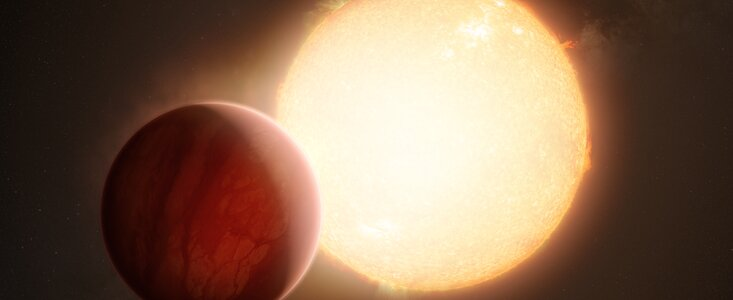Using the Very Large Telescope, one of the heaviest chemical elements was detected in the atmosphere of an exoplanet

Using the Very Large Telescope, one of the heaviest chemical elements was detected in the atmosphere of an exoplanet
Using the European Southern Observatory's Very Large Telescope, astronomers have discovered the heaviest element ever found in the atmospheres of exoplanets: barium.
They were surprised to discover, at high altitudes, in the atmospheres of the superheated gas giants WASP-76 b and WASP-121 b, exoplanets orbiting stars outside our solar system.
This unexpected discovery raises questions about what these strange atmospheres might look like.

“The puzzling and nonsensical part is: why is there such a heavy element in the upper layers of Earth,” says Tomas Azevedo Silva, a doctoral student at the University of Porto and the Institute of Astrophysics and Space Sciences (IA) in Portugal, who led the study published in Astronomy & Astrophysics. The atmosphere of these ?planets
WASP-76 and WASP-121 are not ordinary exoplanets. Both are known as super-hot Jupiters, as they are similar in size to Jupiter and have a surface temperature of up to 1,000 degrees Celsius, which is very high.
This is because they are so close to the host stars, which also means that it only takes one to two days to orbit each star. This gives these planets rather strange features, for example scientists suspect that it rains iron in WASP-76 b.
However, scientists were surprised to find barium, which is two and a half times heavier than iron, in the upper atmospheres of WASP-76 b and WASP-121 b.
"Given the high gravity of the planets, we would expect heavy elements such as barium to fall rapidly into the lower atmosphere," explains co-author Olivier Demangon, a researcher from the University of Porto and (IA).
"This was an accidental finding," Azevedo Silva says. "We weren't expecting or looking for barium specifically, and we had to verify that it was indeed from the planet, because it had never been on any exoplanet before."
The fact that barium has been detected in the atmospheres of both super-hot Jupiters suggests that this class of planets may be even more exotic than previously thought.
Although we sometimes see barium in our skies as the reason for the bright green color in fireworks, the question for scientists is: What natural process would cause this heavy element to be present at such high altitudes on these exoplanets? As Dimanjohn explains, “At the moment, we are not sure what these mechanisms are.”
Hot Jupiters are very useful for studying the atmospheres of exoplanets. "They have very elongated atmospheres because they are gassy and hot, so they are easier to spot and study than those of smaller or colder planets," Demangon explains.
Determining the composition of an exoplanet's atmosphere requires highly specialized equipment. The team used the ESPRESSO instrument on the ESO VLT in Chile to analyze starlight filtered through the atmospheres of WASP-76b and WASP-121b. This made it possible to clearly detect several elements in it, including barium.
These new findings show that we're just beginning to unlock the mysteries of exoplanets. With futuristic instruments like ANDES, which will be on ESO's next large telescope, astronomers will be able to study the atmospheres of large and small exoplanets, including rocky Earth-like planets, at much greater depth and gather more evidence about the nature of These strange worlds.
source :websites

